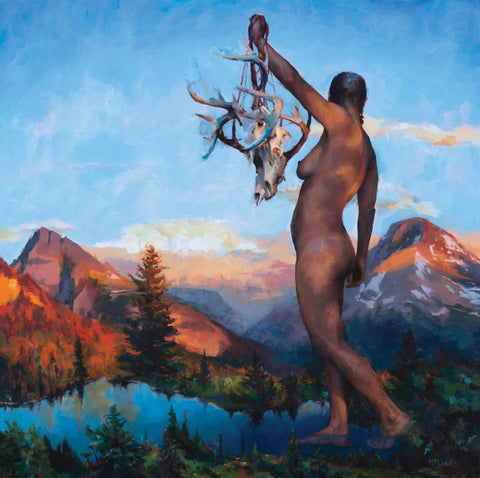How do you define performance art? In the simplest terms, it’s an artwork based on the actions performed by actors, live in the physical world rather than on a canvas, sculpted in stone, or recorded on a film reel. Performance art can be arranged to take place essentially anywhere, even if the performance itself is rehearsed in a studio or other creative space. Due to its non-traditionality, performance artists garnered their fair share of criticism. Still, over time, the appeal of art that was dynamic rather than static eventually connected with audiences, and performance art started to become more accepted. To learn more about the history, meaning, and evolution of performance art, we invite you to read on!
Performance Art – Definition
Performance art is an all-encompassing term, collectively referring to actions performed or presented live to an audience. It’s difficult to give it a tangible definition due to its dynamic nature – in contrast to more traditional forms of art, performance art by design doesn’t impose or abide by any rigid boundaries, even within its own taxonomy. Aspects defining its different types can permeate through all the others or draw from more traditional forms of art. As such, performance art evades many attempts at containing it and generalizing what it can or cannot be.
One thing to keep in mind, however, is that the terms “performance art” and “performing arts” are not interchangeable. Rather than being synonymous with performance art, the latter term simply refers to a much more organized, collaborative form of artistic expression. Think theatre, dance, music, opera, or other live performances.
A Brief History of Performance Art
The roots of performance art extend to the period of modern art, having particularly strong connections to avant-garde, conceptual art, and Dada movements. In fact, many art historians associate the beginning of performance art with early twentieth-century Dada and Futurist cabarets. One such cabaret by the name of Cabaret Voltaire was created in 1916 by Hugo Ball, known as the de facto founder of the Dadaist movement. Many such initiatives were taken up throughout the first half of the twentieth century. However, events around the world took a turn for the tumultuous, and many of these pioneering ventures did not go far in the wake of the First and Second World Wars.
Eventually, around the 1960s, things started flourishing once again. After World War II, New York City (and, by extension, the United States in general) replaced Paris and the old continent as the global hub for art and visual culture. Many performance arts events and movements began popping up in America, where it has been thriving ever since. Today, through their often bizarre and unconventional portrayals, happenings, and social commentary, many performance artists gain notoriety and nigh-on celebrity status, though frequently they also come under fire for their controversy.

Beacon - 48” x 48” oil on aluminum - John McLeod
Important Types of Performance Art
Performance art can be loosely divided into the following categories:
- Endurance art: These performances usually involve an actor/performer placed in an uncomfortable situation or circumstance for an extended length of time. To name an example, one of the most famous performance artists, Marina Abramović is known for extremely draining endurance performances, such as sitting still for three months in complete silence.
- Body art: Body art is certainly one of the more recognizable types. As the name suggests, it places the body as the main actor, often involving feats of athleticism or pushing the body to its limits. Body art often broaches topics of bodily identity, autonomy, and gender.
- Site-specific performance (or site-specific theatre): This type of performance art takes place in an atypical location selected specifically to facilitate storytelling or add depth to the message.
- Digital performance: With the advent of new media, artists acquired access to novel ways of expression in the digital space. Interactive online platforms, social media, and virtual reality constitute just a few of the new frontiers that performance artists have attempted to use to reach audiences in ever-more experimental ways.
- Political and activist performances: These performances address social issues by challenging onlookers and audiences to reflect upon their symbolism and its meaning as it translates to the real world. They often advocate for social justice or criticize present-day power structures to raise awareness about these topics.
The Takeaway
What is performance art? It’s a movement in art with its roots in modernism that has stood the test of time and remains relevant and present to this day. Performance artists often draw fire from critics and the general public for their unorthodox and boisterous acts. In spite of how thought-provoking and controversial it may be, performance art still remains a valid and lively form of expression.
Did you enjoy reading this article? Then you may also like: Why Is Art Important?
